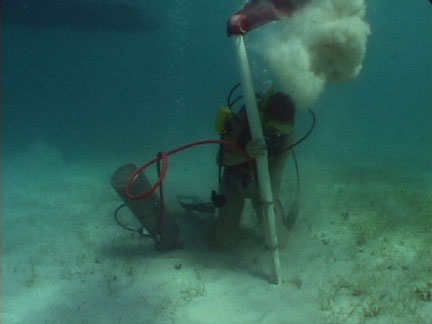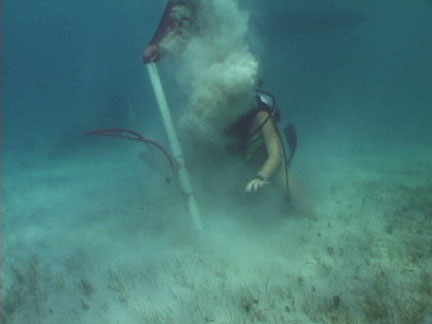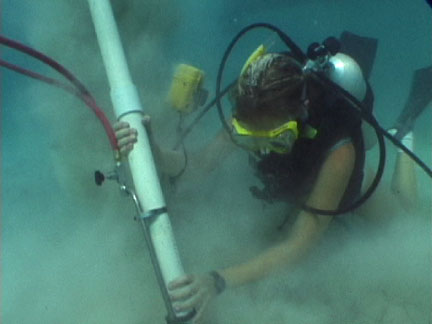Winter Term 2002
Coring Lagoon Sediments in Tague Bay, St. Croix, USVI
As part of my dissertation research, I examined the condition of mollusc shells collected from surface sediments across a lagoon to reef transect in Tague Bay. That work revealed that shell condition changed from location to location and suggested that shells are imprinted with a taphonomic signature that could be useful in reconstructing environments of deposition in fossil shells. The winter term research set out to test whether shells from the subsurface reflect the same environments as their overlying surface counterparts.
- Participants:
Neil Kelley
Jessica Oster
Rebekah Shepard
K. Lindsey Kramer
Karla Parsons-Hubbard
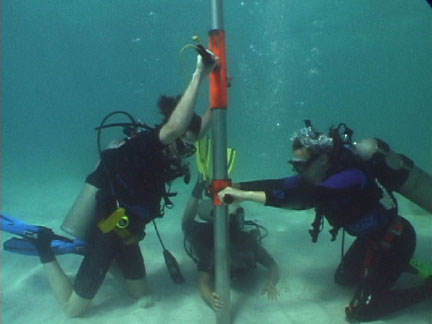
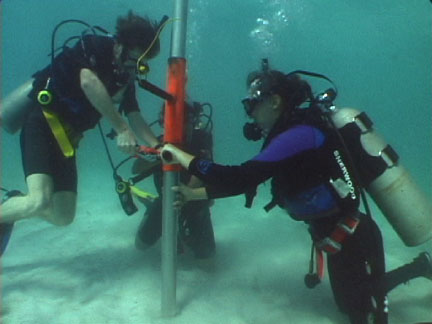
Methods:
The two weeks in St. Croix were spent in data collection. We used a diver-operated percussion corer to extract sediment cores about 1m in length. We also collected companion surface samples using an airlift and did seagrass density surveys at each locality.
Each core was cut into 10cm intervals. One half of each 10cm-sample was seived to separate out the mollusc shells and fragments for future analysis. The other half was archived.
A taphonomic analysis of the shells will be done to compare to the surface shells.
